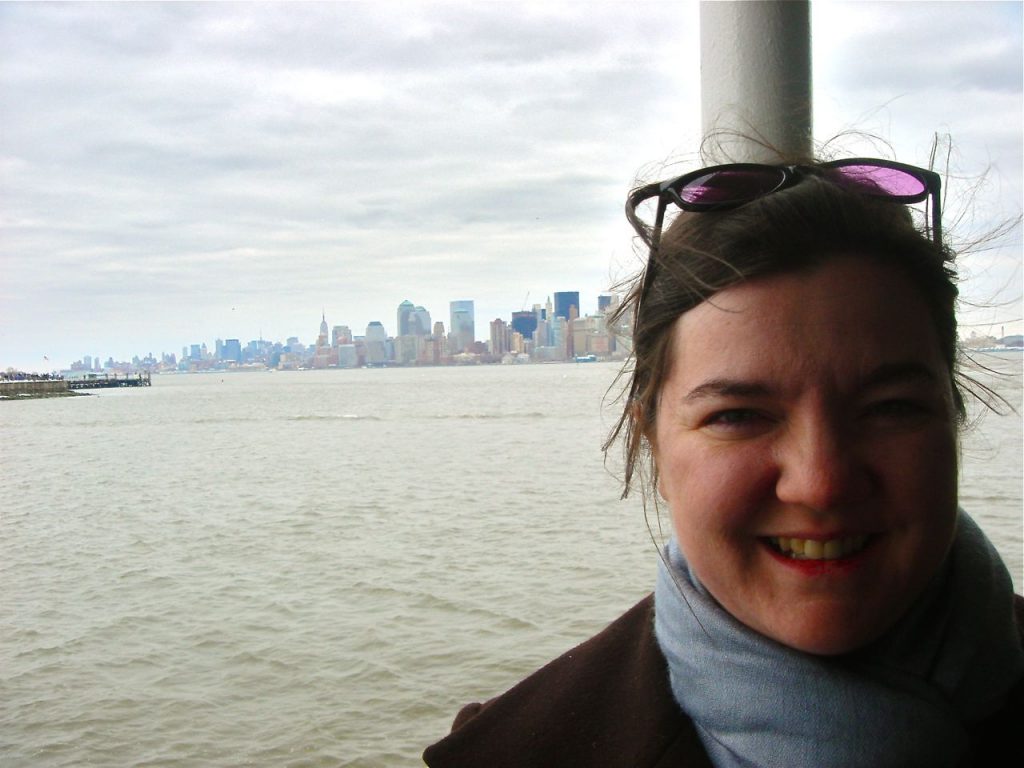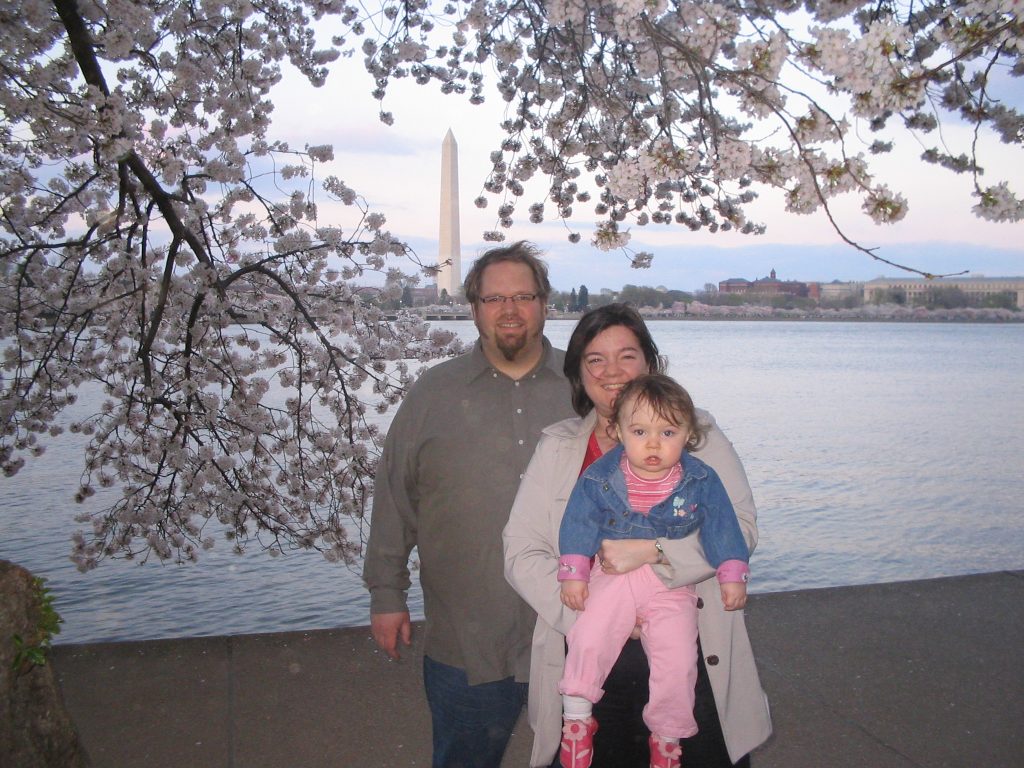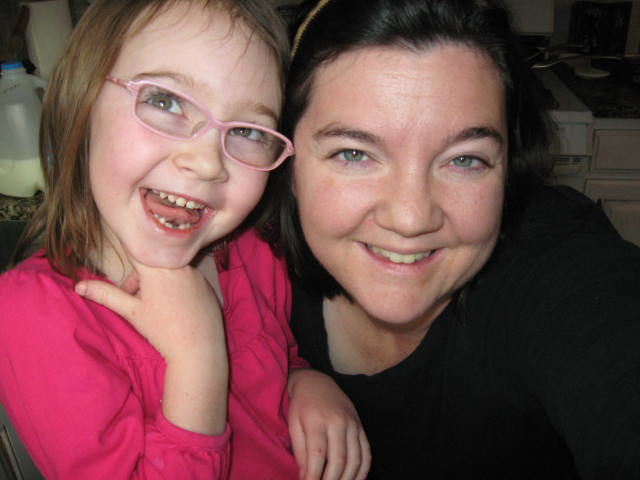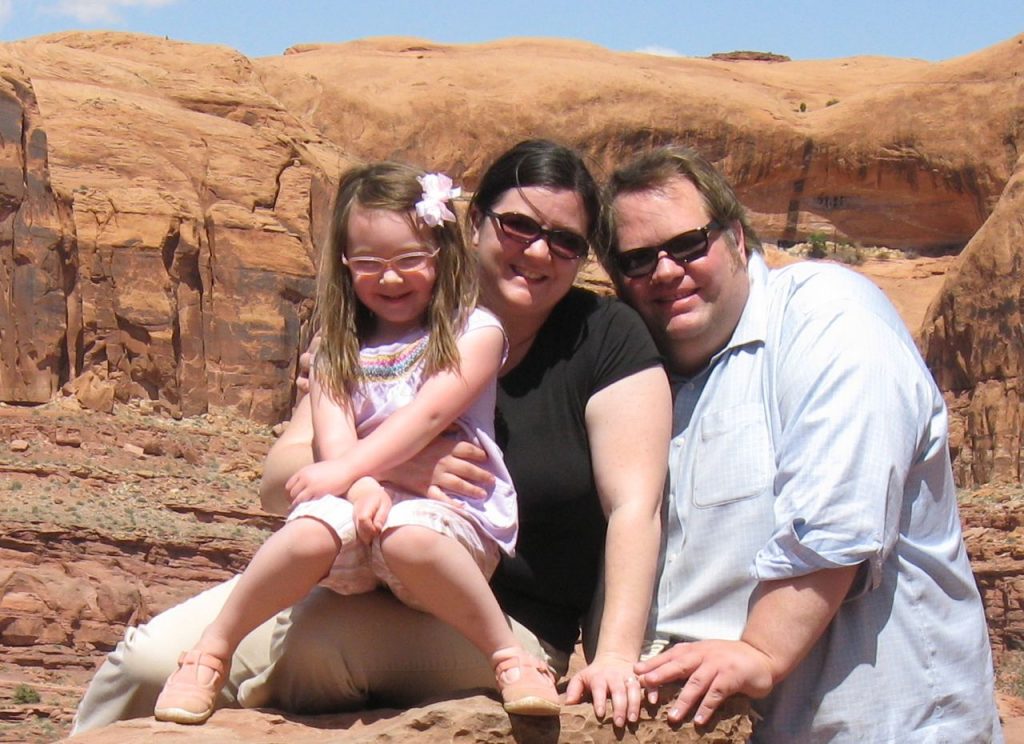As the Director of Education at Brigham Young University’s Museum of Art, Ann Lambson has made it her life’s work to connect people with art. She uses museum education to engage the local community with art in ways that are accessible and meaningful. Raised in a family that encouraged education and creative thinking, Ann believes the arts are essential to holistic learning and fundamental to who we are as children of God.
How did you get involved with museum education?
My mom is a professional violinist and musician; my dad, a lawyer, is also a writer who dabbled in painting and sketching, so I was surrounded by the arts while a child and teenager. My family values the arts, and of course this had a huge influence on me while growing up. A message from my parents that I heard over and over was: Study and do what you love because that will always be part of your life. I remember my dad told me as I prepared to go to college, “You need to learn to write well. You need to learn to think critically, but ultimately find and do what you love.” There was never an expectation that we had to do what someone else was doing. Of course we had expectations in our family life in the sense that the gospel was very important, but my parents never laid out for me the idea that there’s only one way to go. Their counsel and guidance continues to shape who I am.
When I was in high school I was interested in a number of things including education. I also knew that art was something I loved, especially architecture. In high school I spent a lot of time going to art museums and different historic buildings and sites. I always had that duel love of education and art. By the end of my sophomore year at Brigham Young University, I became an Art History major. I really had a passion for learning about art. I planned to go on for a Master’s degree and a PhD because I wanted to become a professor. While I was getting my Master’s degree in Art History and Curatorial Studies at BYU, I worked for a large preschool and coordinated afterschool programs for two local elementary schools. I remember thinking at the time, “How does this job even mesh with what I’m doing in art history?” I was very much on the art history track and planning to be a professor. Ultimately, that preschool job became a huge stepping-stone towards my decision to go into museum education where I could work with children on a daily basis. I was also a curatorial assistant at BYU’s Museum of Art at the time. While working there, I was introduced to the world of museums and found that my passion was truly in museum education. I loved the idea of opening up the arts to a broader audience.
Where has your museum education career taken you?
Currently, I am the Head of Education at BYU’s Museum of Art. Jeff, my husband, is the Curator of Contemporary Art here as well. It’s been an incredible opportunity to have meaningful work in a shared field. One of the things that Jeff and I committed to early on as a couple was to use art as an influence for good. We understood the power of art. We thought that if we could be advocates for the arts in this field, we could make a contribution towards helping young people and affecting change in our communities.
Both of us have had many opportunities to work with young people – children, teens, and college students. It’s been miraculous how our jobs have come together. Jeff and I moved to Washington, D.C. in our mid 20s after we had finished our schooling. We had no jobs lined up, but we were blessed to find jobs in our field fairly quickly. I studied architectural history as a Master’s student. I remember the first time I discovered the National Building Museum. I could not believe there was a national museum dedicated to what I loved and felt was important. I thought, “If I could ever work there it would be a complete dream.” And that’s actually where I ended up spending most of my career while we were in Washington, D.C. Jeff was hired at the Smithsonian Institution’s Hirshhorn Museum. We always look back and realize that aside from having a love and a passion for art, we can see the Lord’s hand confirming that we should be in this field; having a job in the arts takes quite a bit of effort, especially initially, but so many times we have been blessed with amazing opportunities.
What is your vision as the Director of Education at BYU’s Museum of Art?
My broader vision of education at the museum is to open art up to as many people as possible. We need to create opportunities for people of all ages to experience art, to be around the real authentic object. It’s such an incredible experience, especially when we live in this virtual world, to experience the real object; it is absolutely moving and has the ability to change our thoughts and actions.
I hope that the Museum of Art increasingly becomes a place where people can feel, a place where they can learn, a place where they can think. And it’s not just about what’s in your mind, it’s about feeling. That takes time. It means you have to slow things down and not always be rushing around and trying to accomplish as much as you can. It’s about feeling in the moment. When Jeff and I are out in nature, we’re out in nature. We’re enjoying it and being present and not always thinking ahead to the next thing. I think that’s what a museum can do. I hope that it becomes a place where people can be present in the experience.
What role do you think art plays in our communities and families?
Art isn’t just extra fluff. Art isn’t just enrichment, but it is a key part of who we are as human beings. I think about creativity as a divine attribute. When we create we are doing something that connects us more deeply to our Heavenly Father and to Christ. As we build creativity into our lives, into our homes, into our families and communities we are creating a better world. Our families become stronger because the Spirit is present. I experienced this in my family growing up. My mom is a deeply sensitive woman and was such a wonderful example of creating—baking bread, making candles, growing herbs. In our home we learned how to use our hands to create a beautiful environment. Brigham Young said, “Cultivate the earth and cultivate your minds. Build cities, adorn your habitations, make gardens, orchards, and vineyards, and render the earth so pleasant that when you look about your labors you may do so with pleasure, and that angels may delight to come and visit your beautiful locations.” Even in creating our surroundings, we should think about inviting the angels to be with us.
How does your background in and love for the arts influence how your raise your own family?
Jeff and I have always taken our 7 year old daughter Lizzie to art museums and musical performances. We have art supplies and musical instruments at home. She is part of any creating I do. When I go out to our yard to trim the roses or plant flowers, Lizzie has her own little plot, and she helps me to put the plants in. Of course it’s more efficient to just do it on my own, but it’s so much better to teach my daughter how to do these things and to help her appreciate and love her surroundings and say, “Look at these beautiful things that Heavenly Father has created, and we get to be part of it.” We’ve also tried to travel a lot and expose her to different places, people, and experiences. She loves collecting things–rocks or tree branches. We let the collections come into our home and we don’t worry about it. It allows her to explore and gives her opportunity to help create her own surroundings. One of the main things I’ve learned as a mother is that Lizzie is her own individual being and entity; that’s how she came. Pretty quickly I realized she is who she is and my job as a mother is to help guide her. At points we have to course correct, but it’s not about having her fit into some little box or some vision of who I think she should be. Rather, it’s about recognizing how beautiful and unique she is. Lizzie’s so different from me and so different from Jeff. We realize that it is our job not to squelch that creativity and that individuality but to help guide it.
As Mormons, do you think we have a specific responsibility towards the arts?
Absolutely. When you take art out of the equation, you’re literally removing a part of your soul and the soul of your community. As Latter-day Saints, we need to play an important role in advocating for the arts and having arts in our schools and in our communities. It’s not only about reading and math. Art is an innate part of who we are as human beings. It’s inseparable.
Often times in our educational system we separate out the ways in which we learn into separate subjects–you have art, you have math, you have science, etc. It’s so compartmentalized. Our brains don’t work that way, our lives don’t work that way. In the process of all that compartmentalizing, you often stop seeing how it’s all interconnected. You don’t see that when you’re creating art you might also be learning about math or using skills from the sciences.
I worked as the director of BYU’s Education in Zion Gallery before coming to the Museum of Art. It is an incredible space that focuses on the importance of education in our faith. Karl G. Maeser’s philosophy on learning embodied the idea of an education of the whole soul. In the Doctrine & Covenants, “soul” is defined as both body and spirit. When you think about it, the education of the whole soul is an education of the intellect but also one of the heart and of the body. It’s a social education. We’re multifaceted. We’re not comprised of separate and unrelated aspects. We’re holistic beings. Art plays such a critical role in helping to tie some of this together and in helping to make us more aware of this interconnectedness.
Art and museum education are part of your larger passion for education in general. How has education come to play such a key role in your life?
My passion for education has a lot to do with the family in which I was raised and nurtured. Both of my grandfathers were unable to finish high school. My maternal grandfather was from an immigrant family who came to America from England after World War I. His mother was a war widow from that war, and he left school at 14 years old to help support his family and siblings’ schooling. My dad’s father didn’t finish high school either; although both grandfathers later went on to obtain their GEDs. My grandparents made sure my parents went to college and on to graduate school. It’s not that education wasn’t important to my grandparents. It’s that they weren’t given certain opportunities financially and so forth. I always look back at their examples and the sacrifices that were made in each generation. I value the opportunities I’ve had with education, and I value the many sacrifices that came before me that helped to put me in this position. There’s a great quote from one of our early U.S. presidents, President John Adams. He said, “I must study politics and war, that my sons may have the liberty to study mathematics and philosophy, natural history and naval architecture, in order to give their children a right to study painting, poetry, music, architecture, tapestry, and porcelain.” Each generation sacrifices to allow the next to reach a point of security. The basic needs in life must be met which then allows one to study the arts.
My maternal grandfather wrote me a lengthy letter while I was in college in which he told me not to paint too soon for my bread. He was referencing Karl G. Maeser who said, “Eagerness to earn bread and butter has overshadowed many a golden opportunity.” So often we feel that we have to get on with our life, that we have to get our degree, get our job, get going and check off certain milestones like buying a house and whatever else is on our list. In fact, it’s best if we can just spend more time learning. It’s such a special period when you’re in college. At the time you think you’re stressed more than you can imagine and you have more responsibilities than you can imagine when in fact it’s a period of life when you are focused on learning; your primary responsibility is to learn and to expand your mind. Life is so much faster, more complex after college.
Also, both of my grandfathers were so open to truth. In fact, my paternal grandfather joined the church with my grandmother, my 16-yr-old uncle, and my 14-yr-old dad. My grandfather had an expansive mind. He wasn’t formally educated but the way in which he approached truth and sought truth made him receptive when the gospel was introduced to him. I’ve always tried to have an openness like that. Because of their examples and my upbringing, education has been a driving force in my life: it’s part of my life’s work as a mother, as an individual, and as a museum educator. Joseph Smith said, “The first and fundamental principle of our holy religion is that we believe that we have a right to embrace all and every item of truth.” That is who we are. That’s what I strive to be. I strive to find truth. I strive to be open.
At A Glance
Ann Baier Lambson
 Location: Provo, UT
Location: Provo, UT
Age: 37
Marital status: Married 15 years
Children: On daughter, age 7
Occupation: Museum educator
Schools Attended: BYU
Languages Spoken at Home: English
Favorite Hymn: “Come Thou Fount of Every Blessing” and “Now Let Us Rejoice”
Interview by Krisanne Hastings. Photos used with permission.
At A Glance




